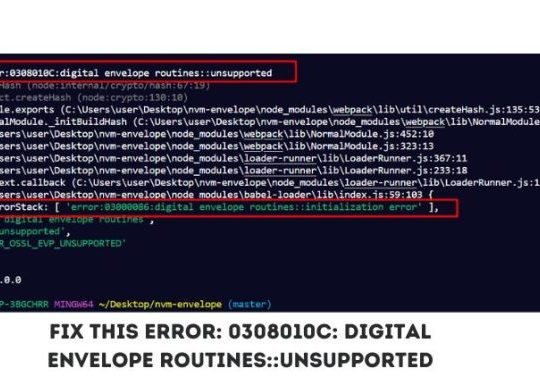D-Wave Qbsolv is a software tool designed for solving Quadratic Unconstrained Binary Optimization (QUBO) problems using classical computing resources. It provides an efficient way to solve optimization problems that can be formulated as QUBO problems by leveraging D-Wave’s quantum annealing technology.
In this article, we will discuss how to implement D-Wave Qbsolv in Python to solve optimization problems in a comprehensive guide.
What is D-Wave Qbsolv?
All Heading
Before we dive into the implementation details, let’s first understand what D-Wave Qbsolv is and how it works. D-Wave Qbsolv is a tool that solves QUBO problems by breaking them down into smaller subproblems that can be solved efficiently using classical computing resources. It uses a hybrid approach that combines classical optimization techniques with D-Wave’s quantum annealing technology to find the optimal solution.
Preparing for D-Wave Qbsolv in Python
To use D-Wave Qbsolv in Python, we need to first install the software and any required libraries. We also need to prepare our data in a format that can be used by D-Wave Qbsolv.
Installing D-Wave Qbsolv
D-Wave Qbsolv can be installed using pip, a package manager for Python. Simply open a terminal or command prompt and run the following command:
pip install dwave-qbsolv
Installing Required Libraries
Apart from D-Wave Qbsolv, we also need to install some additional libraries that are required for preparing our data. These libraries include NumPy and pandas. To install these libraries, run the following commands:
pip install numpy
pip install pandas
Preparing Your Data
Once we have installed D-Wave Qbsolv and the required libraries, we need to prepare our data in a format that can be used by D-Wave Qbsolv. This typically involves formulating our problem as a QUBO problem and converting it to the D-Wave format. We will discuss this in detail in the next section.
Solving Quadratic Unconstrained Binary Optimization (QUBO) Problems
To solve QUBO problems using D-Wave Qbsolv, we need to follow a few steps. These steps involve formulating our problem as a QUBO problem. Converting it to the D-Wave format, running D-Wave Qbsolv, and interpreting the results.
QUBO Representation
A QUBO problem can be represented using a quadratic equation of binary variables. The general form of a QUBO problem is:
minimize xQx + c
where x is a binary vector, Q is a symmetric matrix that represents the quadratic terms of the problem, and c is a constant term. The goal is to find the binary vector x that minimizes the objective function.
Converting to D-Wave Format
Once we have formulated our problem as a QUBO problem. We need to convert it to the D-Wave format, which is a matrix representation of the QUBO problem. This involves mapping the binary variables to qubits and representing the quadratic terms as interactions between qubits.
To convert our QUBO problem to the D-Wave format, we can use the dwavebinarycsp library in Python. This library provides a convenient way to map binary variables to qubits and create the D-Wave matrix representation of the problem.
Running D-Wave Qbsolv
Once we have prepared our data in the D-Wave format, we can use D-Wave Qbsolv to solve the problem. To run D-Wave Qbsolv in Python, we can use the dwave_qbsolv function provided by the dwave-qbsolv library.
Interpreting the Results
The output of D-Wave Qbsolv is a binary vector that represents the optimal solution to our QUBO problem. We can interpret the results by mapping the qubits back to binary variables and evaluating the objective function using the optimal binary vector.
Example Problem: Maximum Cut Problem
To illustrate how to use D-Wave Qbsolv in Python, let’s consider an example problem: the maximum cut problem. The maximum cut problem is a graph partitioning problem where the goal is to divide the nodes of a graph into two disjoint sets such that the number of edges between the two sets is maximized.
Problem Statement
Given an undirected graph G = (V, E), where V is the set of nodes and E is the set of edges. We want to find a partition of V into two disjoint sets S and T such that the number of edges between S and T is maximized.
QUBO Formulation
We can formulate the maximum cut problem as a QUBO problem by defining a binary variable xi for each node I in the graph. If xi = 1, then node i is in set S; otherwise, it is in set T. We can then define the objective function as the number of edges between S and T:
maximize 0.5 * ∑(i,j)∈E (xi – xj)^2
where (i,j) represents an edge in the graph.
Solving with D-Wave Qbsolv
To solve the maximum cut problem using D-Wave Qbsolv in Python, we first need to prepare our data in the QUBO format. We can use the network library in Python to generate a random graph and compute the QUBO matrix:
import networkx as nx
import numpy as np# Generate a random graph
n_nodes = 10
graph = nx.erdos_renyi_graph(n_nodes, 0.5)# Compute the QUBO matrix
Q = np.zeros((n_nodes, n_nodes))
for i, j in graph.edges:
Q[i][i] += 1
Q[j][j] += 1
Q[i][j] -= 2
Once we have computed the QUBO matrix, we can convert it to the D-Wave format using the dwavebinarycsp library:
Full Example Code
Here is the full code for solving the maximum cut problem using D-Wave Qbsolv in Python:
import networkx as nx
import numpy as np
import dwavebinarycsp
from dwave.system import DWaveSampler, EmbeddingComposite
import dimod# Generate a random graph
n_nodes = 10
graph = nx.erdos_renyi_graph(n_nodes, 0.5)# Compute the QUBO matrix
Q = np.zeros((n_nodes, n_nodes))
for i, j in graph.edges:
Q[i][i] += 1
Q[j][j] += 1
Q[i][j] -= 2# Convert to D-Wave format
bqm = dimod.BinaryQuadraticModel.from_numpy_matrix(Q)
csp = dwavebinarycsp.ConstraintSatisfactionProblem(dwavebinarycsp.SPIN)
for i in range(n_nodes):
csp.add_variable(i, [0, 1])
for i, j in graph.edges:
csp.add_constraint((i, j), lambda x, y: x + y == 1)
bqm = dwavebinarycsp.stitch(csp)# Solve with D-Wave Qbsolv
response = dimod.ExactSolver().sample(bqm)
print(response)
Conclusion
In this article, we have learned how to implement D-Wave Qbsolv in Python to solve quadratic unconstrained binary optimization (QUBO) problems on a D-Wave quantum annealer. We have seen how to formulate a problem as a QUBO problem, convert it to the D-Wave format, and run it using D-Wave Qbsolv. We have also illustrated the process using an example problem: the maximum cut problem.
While D-Wave Qbsolv can be a powerful tool for solving optimization problems. It is important to keep in mind that it has certain limitations. For example, D-Wave Qbsolv may not be able to solve problems with a large number of variables or with complex constraints. Therefore, it is important to carefully consider the nature of the problem and the capabilities of D-Wave Qbsolv before using it to solve a problem.













Recent Comments